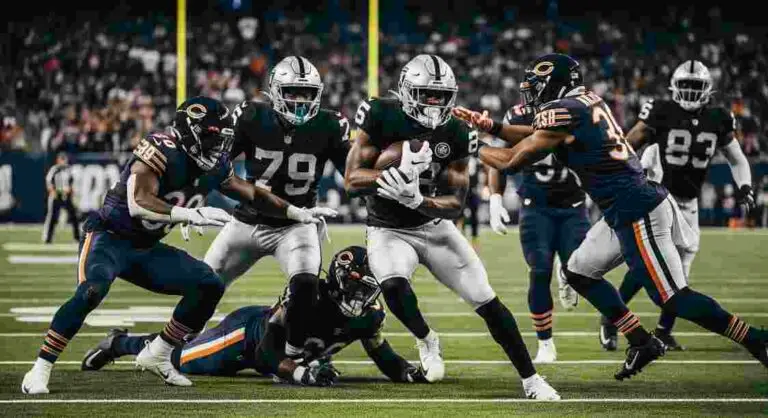NFL Ball Carriers Abbr: Decoding Football’s Rushing Terminology
For new football fans and even some seasoned ones, football statistics can be a maze of abbreviations and acronyms. One of the most frequently encountered and often misunderstood terms in NFL stat sheets is nfl ball carriers abbr. Whether you’re watching a game, reading a fantasy football breakdown, or diving into Pro Football Reference, understanding the shorthand for ball carriers is key to following the action and analyzing player performance accurately.
This article will help you unpack the abbreviations commonly used for ball carriers, understand what they mean in the context of a game, and explore how they fit into the broader world of football analytics.
Understanding What “Ball Carrier” Means in the NFL
In football, a ball carrier is any offensive player who is currently running with the football. Most commonly, this is a running back, but wide receivers, quarterbacks, and even tight ends can become ball carriers depending on the play.
On stat sheets and play-by-play logs, players who run with the ball are often labeled with specific shorthand notations. The nfl ball carriers abbr is a quick reference that helps broadcasters, analysts, and fans identify player roles during rushing plays.
Examples of Ball Carriers
- RB (Running Back) – Primary ball carrier in most offenses
- QB (Quarterback) – Occasionally carries on scrambles or designed runs
- WR (Wide Receiver) – Sometimes used on end-arounds or jet sweeps
- FB (Fullback) – Used in short-yardage situations
Common Abbreviations Used for Ball Carriers
When reading NFL stats, you’ll notice a range of abbreviations. The nfl ball carriers abbr typically appears in rushing stats and game recaps, summarizing player performance on the ground.
Here are a few of the most used abbreviations:
- CAR (Carries) – Number of times the player carried the ball
- YDS (Yards) – Total rushing yards gained
- AVG (Average) – Yards per carry
- TD (Touchdowns) – Rushing touchdowns
- LNG (Longest) – Longest run from scrimmage
These abbreviations provide a snapshot of how effective a player is when running the ball. For example, a player with 15 CAR for 120 YDS and 2 TDs had a very strong rushing performance.
Why Abbreviations Matter in NFL Analytics
As football becomes more data-driven, understanding abbreviations like nfl ball carriers abbr becomes essential. Fantasy football players, sports bettors, and analysts rely on clear and consistent abbreviations to make sense of player performance and game strategy.
With fast-paced play and dozens of athletes on the field, abbreviations provide a simplified way to digest complex data. This is especially important in live broadcasts and mobile apps where space is limited and stats must be delivered quickly.
Real-Time Data and Fan Experience
Mobile score apps and fantasy dashboards use these abbreviations to display live updates. A fantasy football user might see something like “D. Henry: 18 CAR, 104 YDS, 1 TD” and instantly know how their player is performing.
Position vs. Play Type: A Key Distinction
It’s important to note that nfl ball carriers abbr can refer to both a player’s position and the type of play. While a running back is the typical ball carrier, any player involved in a rushing play can earn the abbreviation in a stat log.
For example:
- A quarterback may have 6 CAR in a game due to scrambles and sneak plays.
- A wide receiver may show 2 CAR from designed reverses or sweeps.
So, when interpreting stats, you’ll want to consider whether the player is typically a ball carrier by position or is occasionally used that way based on play design.
FAQ
Q: What does “CAR” stand for in NFL stats?
A: “CAR” stands for carries, which refers to the number of rushing attempts by a player.
Q: Are only running backs considered ball carriers?
A: No, while running backs are the primary ball carriers, quarterbacks and wide receivers can also carry the ball.
Q: Is there a difference between rushing and receiving stats?
A: Yes, rushing stats use terms like CAR and YDS (rushing), while receiving stats use REC (receptions) and YDS (receiving).
Q: Where can I see nfl ball carriers abbr in use?
A: You can find these abbreviations on NFL websites, fantasy football platforms, sports news apps, and broadcast graphics.
Q: How can I learn more about NFL abbreviations?
A: Check out NFL.com glossary pages, fantasy sports forums, and sports statistic databases like Pro Football Reference.
Conclusion
The nfl ball carriers abbr is more than just a set of letters on a stat sheet—it’s a concise, universal language for football fans, analysts, and fantasy players alike. These abbreviations help us understand who’s moving the chains, who’s breaking tackles, and who’s contributing on the ground game.
By learning the most common terms like CAR, YDS, and TD, fans can follow games more closely, make better fantasy decisions, and appreciate the strategic nuance of the NFL. In an era where data is king, knowing your abbreviations is like knowing your playbook—essential for staying in the game.
So next time you’re watching Sunday Night Football or updating your fantasy roster, you’ll have a sharper eye for detail when those ball carrier stats roll across the screen.







